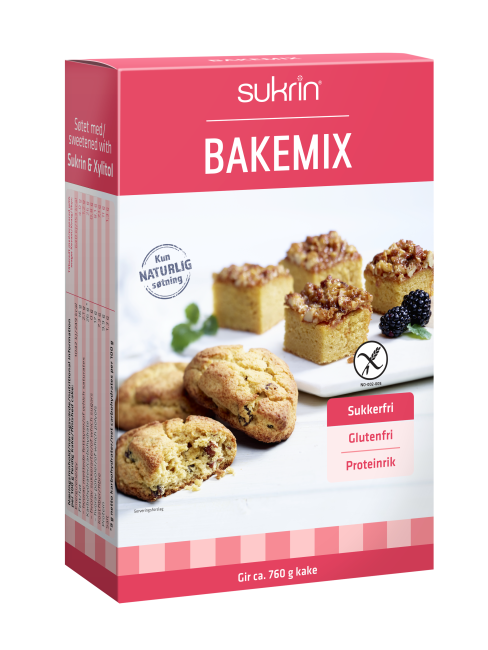
Baking mix
Baking mix is the perfect base when you want to bake something simple and successful without sugar or gluten. Just add your favourite flavourings and let your imagination do the rest; chocolate cake, cupcakes, sponge cake, scones, waffles, pancakes - the list is endless!
- Sugar-free
- Only natural sweeteners
- Gluten-free
- 10 % protein
- Perfect for sponge cake and scones
Ingredients
Sweeteners (erythritol, xylitol), corn starch, pea protein, sesame flour, fibres (resistant corn starch, chicory, peas, psyllium), potato starch, leavening agent (sodium bicarbonate, disodium phosphate), salt, stabilizer (carrageenan), emulsifier (mono- and diglycerides), aroma, acidity regulator (citric acid).
Nutritional information
| Per 100 g | |
|---|---|
| Calories | 249 kcal |
| Fat | 16 g |
| of which saturated fat | 2,1 g |
| Carbohydrates | 26 g |
| of which sugars | 0 g |
| of which polyols | 17 g |
| net carbohydrates | 9 g |
| Dietary fiber | 7,3 g |
| Protein | 9,9 g |
| Salt | 1,3 g |
Allergens
Sesame